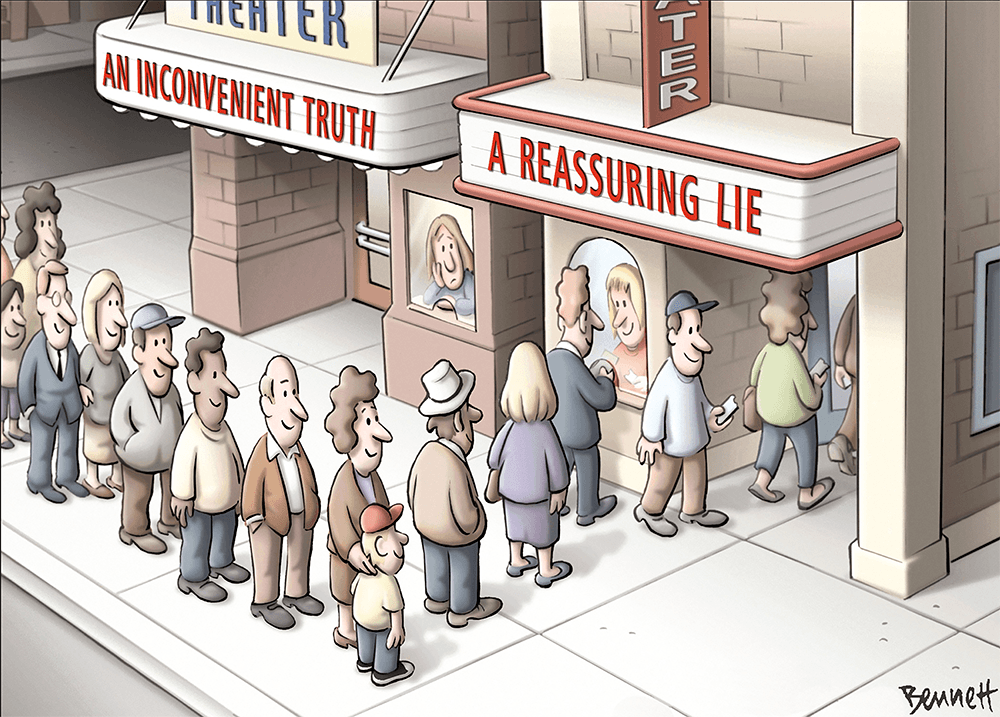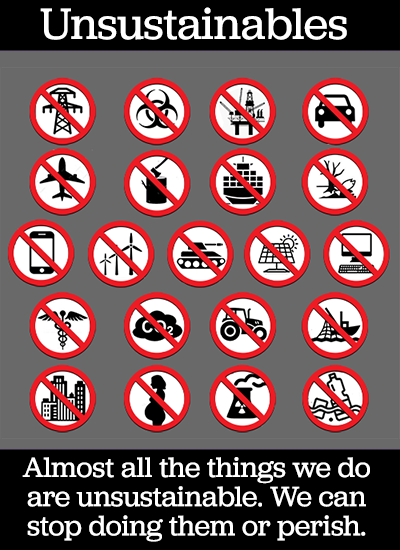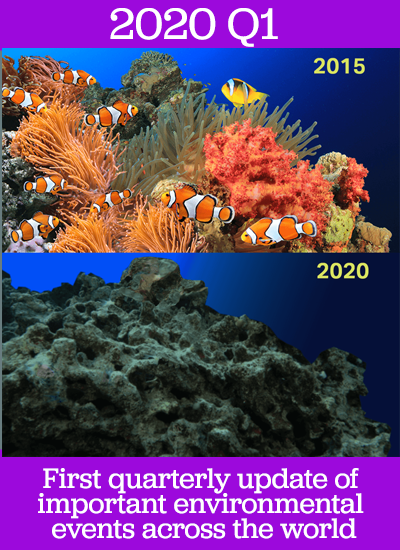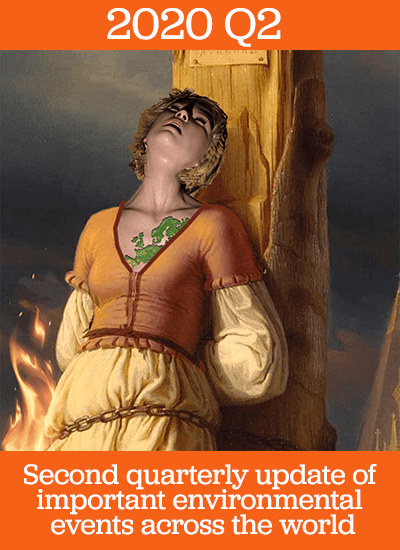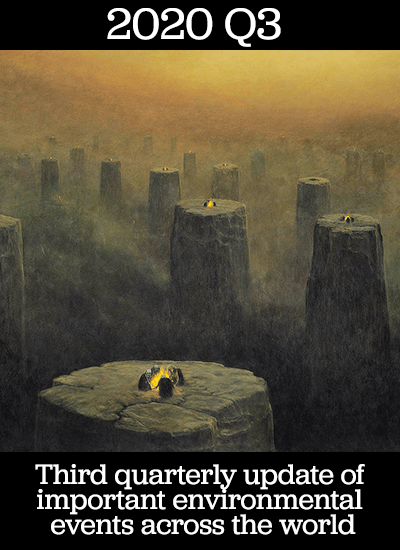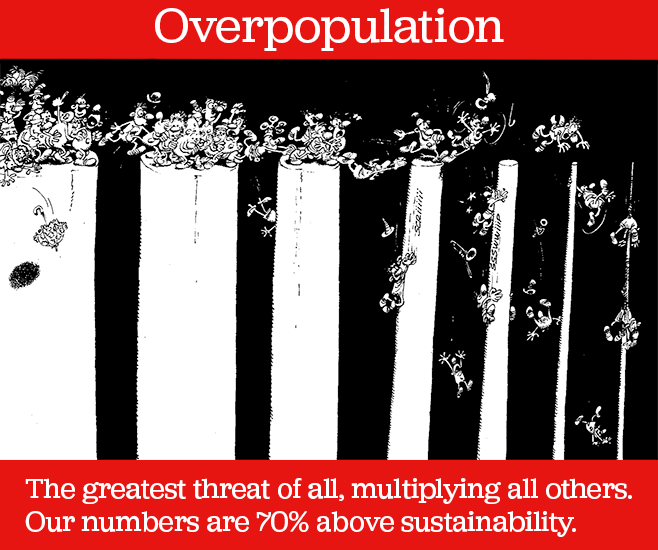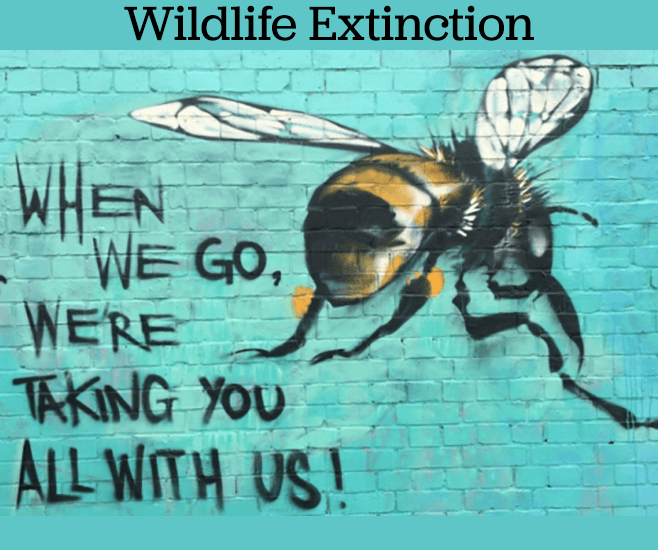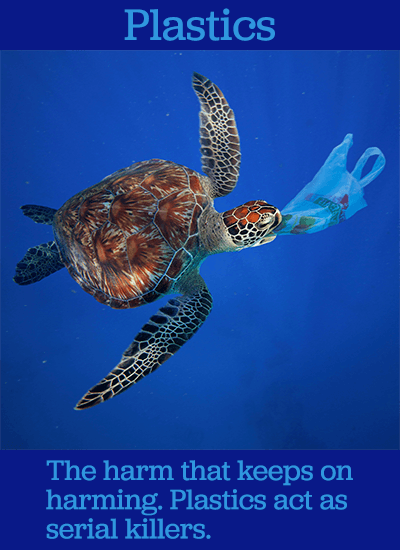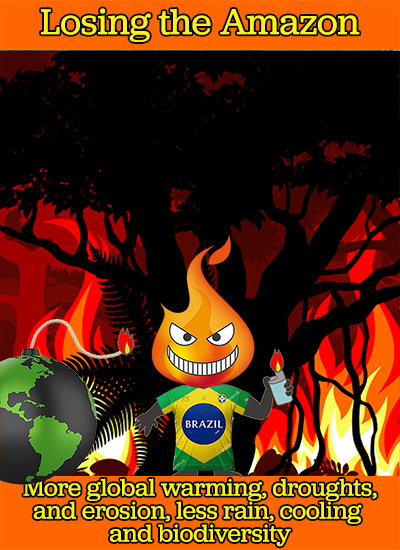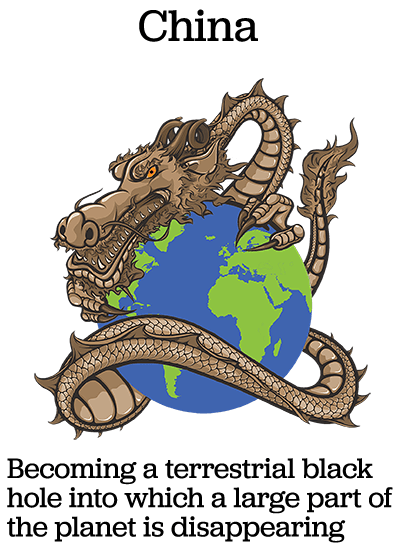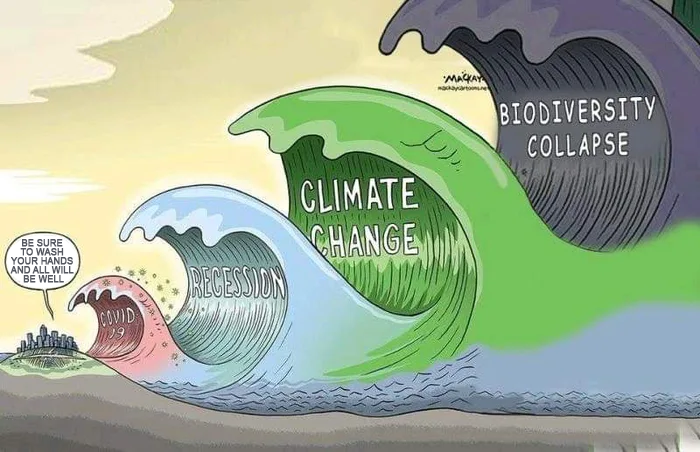The threats only keep growing
Climate change
Global heating continued, making 2020 the hottest year on record, in a tie with 2016, although temperatures in that year were boosted by a major El Niño event. Last year's average temperature was 1.25º higher than in pre-industrial times, only 0.25º below the (very modest) maximum set by the world's nations.
CO2
The relentless increase of this greenhouse gas is not slowing down. On June 1 it reached the highest level in the atmosphere ever recorded at 418.32 ppm. (Meanwhile on 2 February 2021 that record was broken again.)
Methane
We already discussed this dangerous greenhouse gas in Q2. In October an Arctic expedition reported that it had found evidence that frozen methane deposits in the Arctic Ocean had started to be released over a large area, adding yet another boost to global warming.
Extinction
In spite of some successes by devoted conservationists, who managed to improve the status of 26 species close to extinction, the number of animals in decline keeps on growing. A recent update of the IUCN at the end of the year now has 128,918 species on its Red List, including 35,765 threatened with extinction.
In Memoriam
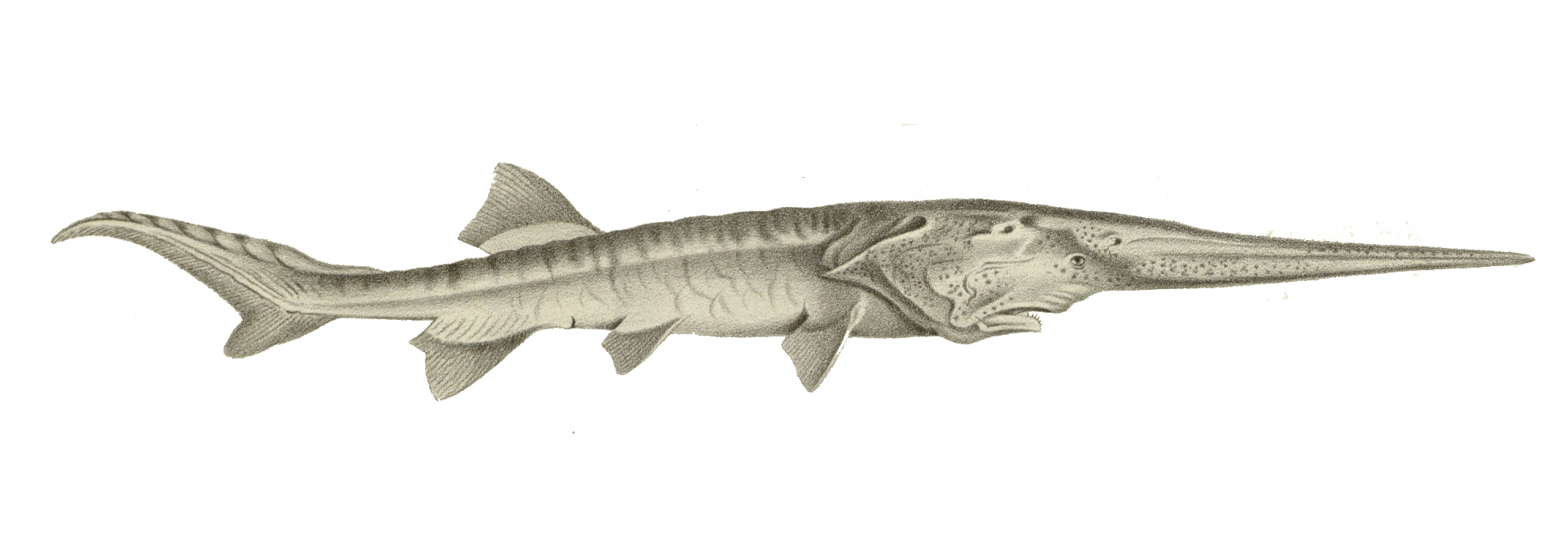
The Chinese paddlefish (psephurus gladius) was one of the oldest and largest freshwater fishes in the world. It could reach the age of 50 and grow to lengths of up to 7 metres. It dated back at least 200 million years and survived massive global upheavals, including the one that killed the dinosaurs. It lived mainly in the Yangtze river. In 2020 it was declared extinct.
This was one of the most significant events of the year, because it was a tragic milestone on humanity's road to self-destruction, a reminder of the harm we are doing, a warning of much worse to come.
Psephurus was not some obscure, little fish but a well-known and iconic animal that was also an important food source. In the 1970s it yielded 25 tons a year. Now it is gone, forever, killed by human activities.
It was not an isolated incident. Many other species from the same river will be sharing its fate soon. During a recent survey in 2017-2018 as many as 140 historically reported fish species were not found and most of them are considered highly endangered.
The Yangtze, one of the largest and biologically richest rivers in the world, is being killed.
In 1954 the annual catch of fish was 427 thousand tons. In 2011 that number had dropped to 46 thousand tons and by 2020 to practically zero, because that was when the authorities had to impose a 10-year ban on fishing to try to salvage something from the carnage they had wrought.
The main cause, apart from the usual human vices such as overfishing and pollution, was the building of two large dams in the river.
Dams are environmental disasters. They destroy habitats and ecosystems, bar fish from spawning grounds and rearing areas. Their reservoirs hold back sediment, which leads to the production of large amounts of greenhouse gases (1 billion tons). The sediment, including nutrients, is withheld from downstream areas, depriving aquatic life of food and reducing the fertility of the land, causing extinctions and consequently loss of biodiversity. Evaporation of water in reservoirs leads to considerable loss of fresh water.
There are about 60,000 of these monstrosities in the world (almost half in China). No wonder that freshwater fish populations are collapsing everywhere. According to the WWF the larger freshwater fishes have declined by 94% and migratory freshwater fish by 76% since the 1970s.
Obviously there is no place for these dams in a sustainable future. Nevertheless thousands more are being planned. Suicide.
Extinction bankers
A report published in October revealed that in 2019 the large investment banks had provided more than 2.6 trillion dollars of financing linked to the destruction of ecosystems and wildlife.
Deforestation
In 2020 the Brazilian Amazon deforestation rate was the highest of the decade.
Plastic waste
This steadily growing threat to life on earth has now reached a phase that may pose a direct threat to humanity. In December it was reported that microplastics have been found for the first time in the placentas of unborn babies.
Microplastics and nanoplastics can cause serious damage when absorbed by living organisms. Studies have shown that they can have a wide variety of harmful effects in animals, such as deformities, liver disease, cell death, tumors, loss of fertility etc.
As we humans produce roughly our own weight in plastic waste every year, the amount of microplastics and nanoplastics will keep on growing as time goes by, making their accumulation in living creatures (including humans) inevitable.
But even if no plastic waste was added anymore, the problem would still grow dramatically because plastic particles act like toxic cluster bombs, each falling apart into a large number of toxic bomblets, which will again do the same. To make matters even worse the risk of harm increases as particles get smaller.
Common sense dictates an instant ban of plastics and monumental clean-up operations. This would mean an immediate end to society as we know it, because of its addiction to plastics. Detoxification will be an extremely painful process, but we have no choice. If we allow the plastic problem to fester, and wait until the consequences become unbearable, for instance because children are born with mental and physical defects all over the world, it will be too late.
And then there was the pandemic.
The whole year lay in the shadow of Covid-19 or, more accurately, the reaction to Covid-19.
As we explained before, the virus itself is mild.
According to a statement of the WHO the real number of infections (so not just the confirmed cases) in late 2020 probably amounted to about 10% of the world population, or 780 million people. The number of deaths was about 2 million. This gives an infection fatality rate of 0.26%, worse than the common flu but not all that much. The bottom line is that more than 99% of the people who get Covid-19 are not going to die from it. In addition the disease is mainly lethal among vulnerable people: the old, the sick and the obese. A healthy person under 65 therefore runs an extremely small risk of dying from the virus.
To put this into perspective, the Spanish flu of 1918-19 killed at least 25 million and perhaps 50 million people. If Covid-19 was as deadly, we would be looking at numbers between 100 and 200 million instead of 2 million.
The Black Death, which was humanity's worst pandemic, claimed at least 25% and possibly as many as 60% of whole populations. If Covid-19 was as deadly, there would be at least 2 billion deaths.
Against this background the hysterical reaction made no sense. Normally, in times of adversity, able leaders view it as their duty to prevent panic, to stay calm and rational and urge the people to do the same. They try to bolster morale by not dwelling on the bad but rather stressing the good.
This time the very opposite was done. Scientists, politicians and especially the media did everything they could to exaggerate the dangers, feeding the panic and hysteria.
From the very beginning flawed scientific articles began to appear in medical journals and mainstream publications, severely overestimating the dangers of Covid-19. Some were withdrawn but the tone had been set for widespread fear.
Everything about the virus was constantly exaggerated, dramatized and sentimentalized. The whole response resembled one enormous scare campaign. Media, politicians and scientists seemed determined to terrify the people with wild, unsubstantiated claims.
The strangest thing about this overreaction was that it did not stop. Normally cooler heads prevail. Not this time. Even when it became clear that Covid-19 was not so terrible as initially feared, this was hardly mentioned in mainstream media or scientific publications. Stranger still, anyone who tried to point it out was fiercely attacked, discredited and demonized. No reasonable discussion was possible.
From morning till night almost everybody kept on stressing how terrible everything was, cherry-picking the worst numbers for no apparent reason.
The number of confirmed cases, for instance, means nothing because the actual number of infections is many times higher. Nevertheless these meaningless numbers were constantly publicized. Hardly any attention was given to the incredible good fortune that the virus hardly affected the most important members of society, the young and the active working population. They ran little or no risk of dying from it.
Without any solid evidence and total disregard for the consequences (under the delusion that anything was better than the virus) governments started taking draconic measures that crippled society in every conceivable way. Now, one year later, there is still no compelling proof that any of these measures did much good, while it is all too certain that they did enormous harm, trillions of dollars of harm, in fact.
A perfect example of the lack of common sense in the pandemic response was the fate of face masks. When the epidemic began, few countries felt the need for their use, because the established science at the time was that they did little or no good against respiratory viruses. Numerous studies had already shown that in the past.
Out of nowhere calls for face masks appeared on the internet and in the media, without any support from meaningful new studies. Those would not even have been possible because the best study for the purpose, the so-called Randomized Controlled Trial, is time-consuming and could not have been completed at such short notice. Nevertheless the calls for masks became louder and louder until politicians felt obliged to introduce them.
When finally the results of the first large-scale RCT (in Denmark) became known in October, they simply confirmed what had been known all along. Masks have little or no effect.
Nevertheless the call for mask wearing only got worse, to the point where some even started advocating the wearing of two masks.
Naturally the appearance of masked people everywhere reinforced the image of Covid-19 as a terrible crisis.
In short the whole response to the pandemic was irrational, overly emotional and harmful to us all.
Then, towards the end of 2020, when the first vaccines became available, all this nonsense suddenly made sense. There was one group that was going to reap astronomical benefits from the virus. A small group that had immense wealth and power and could easily influence the views of the general public:
The pharmaceutical industry, also known as Big Pharma
The scare tactics had created a perfect environment for pharmaceutical companies. Whole countries were lining up to buy vaccines, even before their effectiveness could be proven. It was going to be the greatest windfall Big Pharma it had ever known. As a bonus the industry would be seen as a savior instead of a predatory and criminal organization.
This makes it more than likely that the pharmaceutical companies were behind the scare campaign. In fact it is unthinkable that they would not be. This kind of manipulation of the public is exactly what these pharmaceutical companies have been doing for decades. They even invented diseases, in a practice known as "disease mongering", when they presented some minor discomfort as a serious affliction that demanded immediate and prolonged treatment with their drugs.
For their wrongdoings they have been fined amounts totalling more than 50 billion dollars in the USA alone since 2000, and this by an administration that is heavily biased in their favor.
When Covid-19 appeared, they already had the perfect tools in place to influence a gullible public. They are the biggest lobbyists in the USA by a wide margin, spending hundreds of millions of dollars a year to influence lawmakers. And not surprisingly the first 3 months saw a significant surge in health sector lobbying activity, especially within the pharmaceutical industry.
They spend similar amounts on advertising and marketing. They habitually lie about their products, exaggerating the good and downplaying or concealing the harm. They pay doctors, scientists, writers, publishers and the media large amounts to convey their message.
Undoubtedly the same tactics are being used for vaccines. They are now portrayed all over the world as the only salvation of humankind. Any legitimate concerns about the safety and long-term effects of vaccines are silenced. Obviously the whole vaccine narrative is now being controlled by Big Pharma and its legions of mercenaries.
No wonder that the madness has only deepened. Even countries that have hardly been touched by the virus are begging for vaccines. Examples are Nigeria, Niger, Uganda, New Zealand and Singapore. They all have less than 10 Covid-19 deaths per 1 million inhabitants, which means that the risk of being killed by Covid-19 in those countries is less than 1 in 100,000. There are obviously much better ways of spending money for the common good than wasting it on healthy people.
More details of the true nature of the pharmaceutical industry can be found on our recent Big Pharma page.
"The warnings about global warming have been extremely clear for a long time. We are facing a global climate crisis. It is deepening. We are entering a period of consequences."
Al Gore
"Chimpanzees, gorillas, orangutan shave been living for hundreds of thousands of years in their forest,living fantastic lives, never overpopulating, never destroying the forest. I would say that they have been in a way more successful than us as far as being in harmony with the environment."
Jane Goodall
